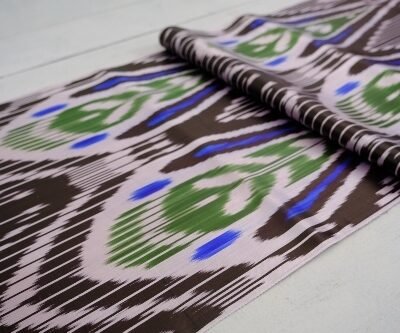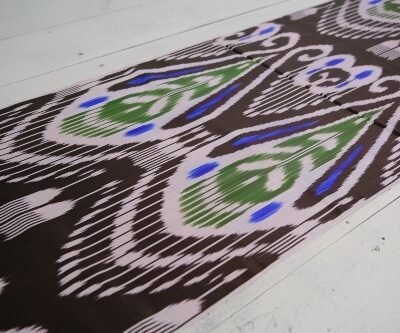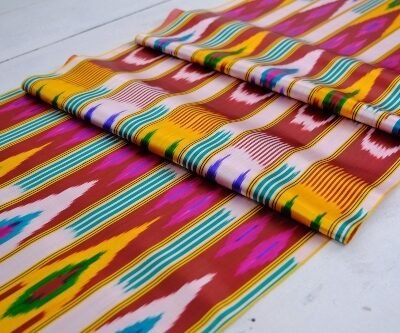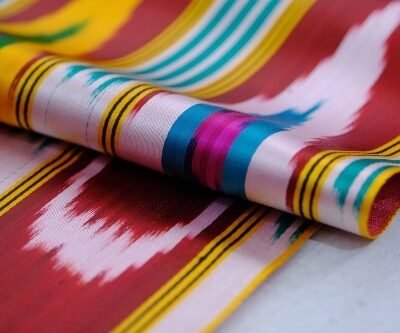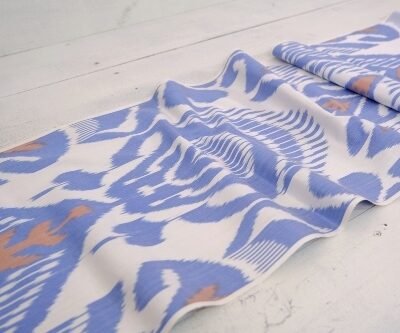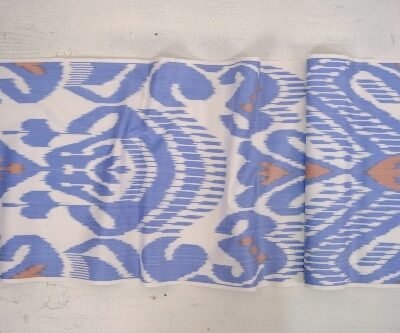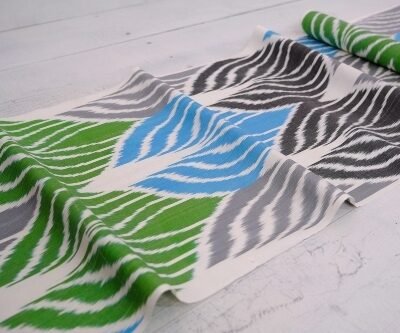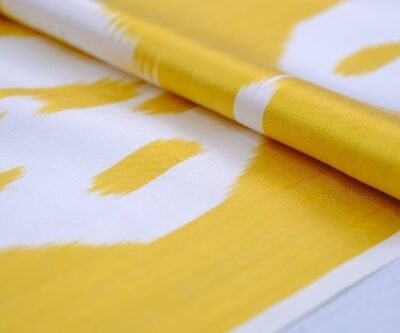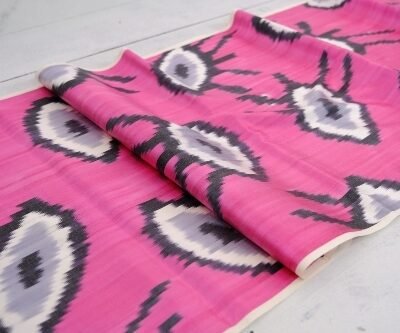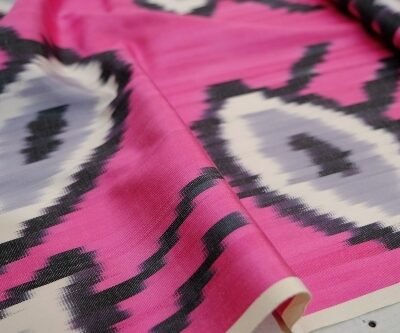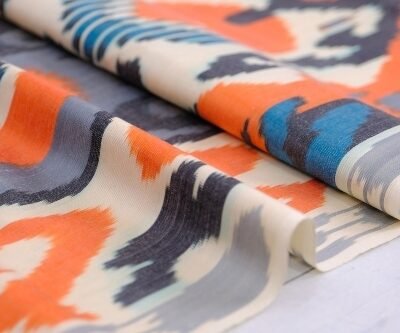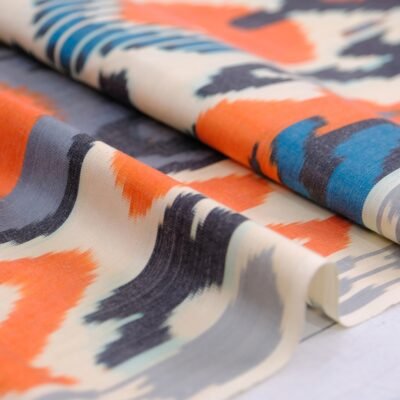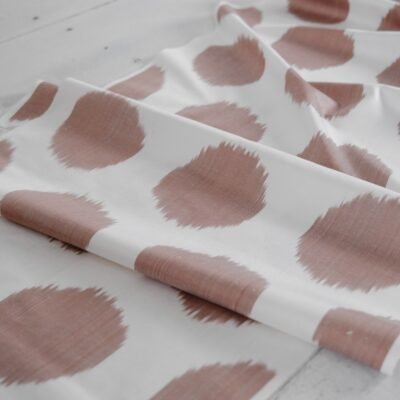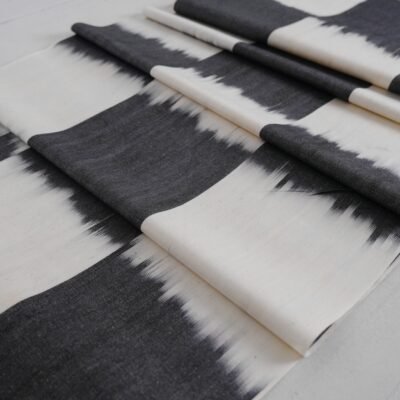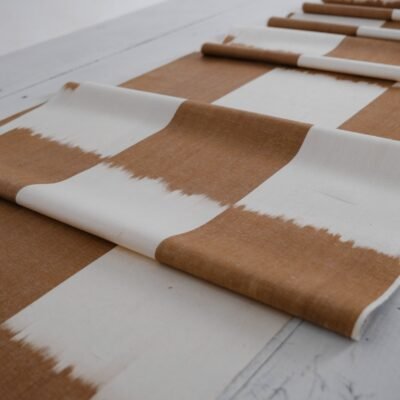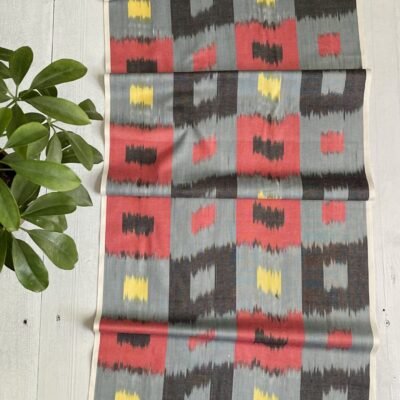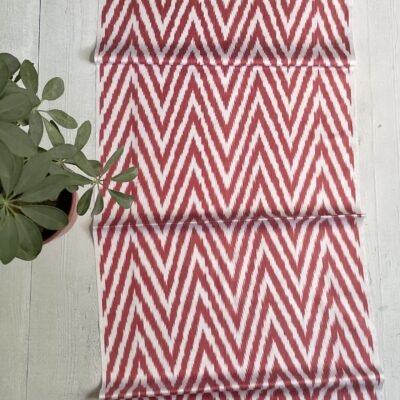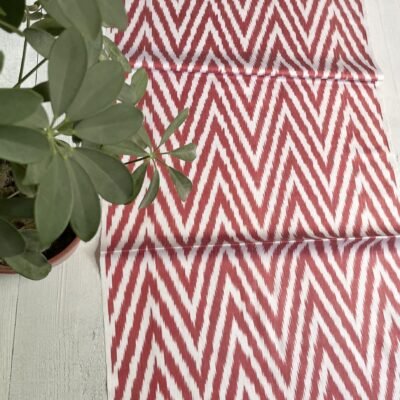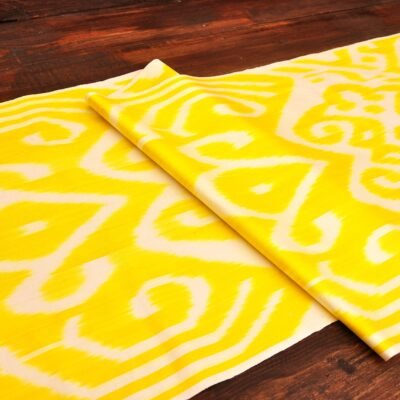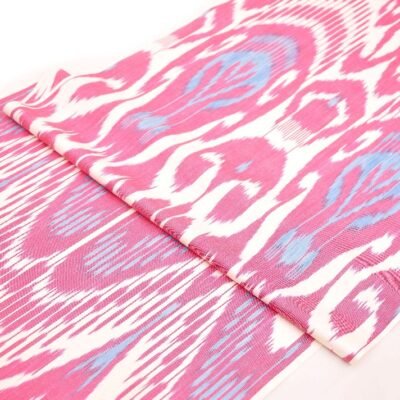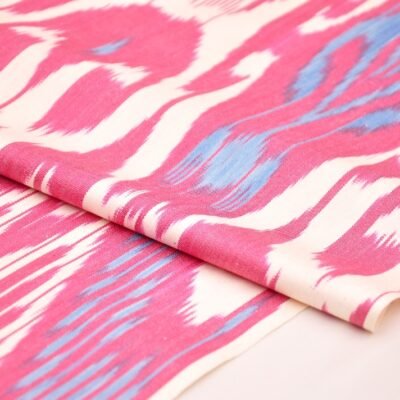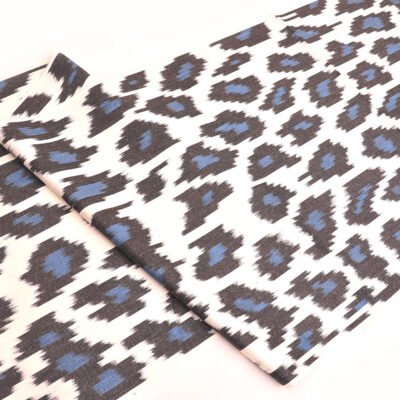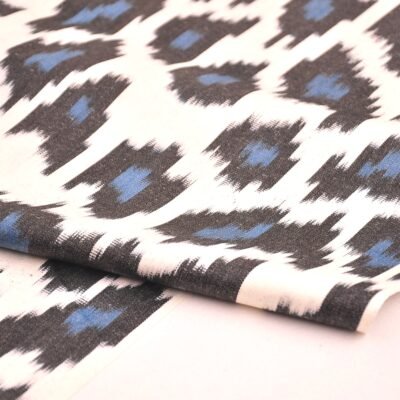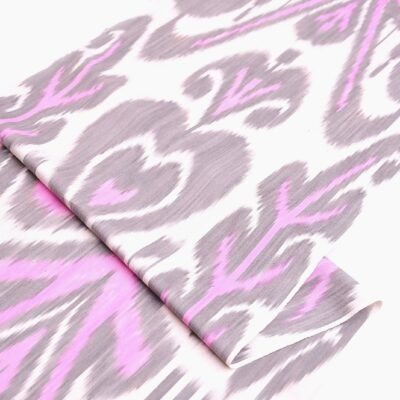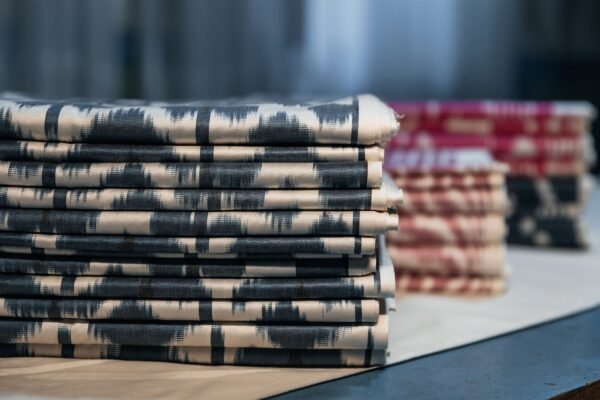Introducing the Splendor of Handloom Fabric
At the heart of textile tradition lies handloom fabric—a masterpiece intricately woven by skilled hands, untouched by the hum of electricity. This enchanting art form has been perfected over centuries, with each thread bearing witness to the dedication of the weavers. To truly understand the splendor of handloom fabric, we must appreciate the meticulous craftsmanship behind it.
Uzbek Craftsmanship: Where Tradition Thrives
One remarkable aspect of handloom fabric is its global diversity. In Uzbekistan, for example, the tradition of crafting exquisite textiles is deeply ingrained in the culture. The country is renowned for its wider ikat fabrics, which often stretch up to an impressive 50 cm in width. These fabrics are a testament to the extraordinary skills of Uzbek weavers who use age-old techniques to create stunning patterns. To experience the authentic beauty of handwoven elegance, one can explore specific Uzbek craft shops or sources that offer these exquisite textiles and even embroidered pillows.
Tracing the Tapestry of Handloom Fabric's History
Embarking on a historical journey, we discover that handloom fabric is not just a product of sartorial necessity; it's a timeless narrative weaving together culture, economy, and civilization. From the linen of ancient Egypt to the cotton of the Indus Valley and the luxurious silk of the Silk Route, the evolution of handloom fabric is a story etched in time, as vibrant as the patterns it adorns. Imagine crafting a story, thread by thread, without the convenience of an automatic spell-check. A daunting task, indeed. Now, replace the story with fabric, and you gain insight into the craftsmanship inherent in handloom weaving. Nevertheless, weavers persevered, creating intricate patterns that mirror the ethos of their societies and cultures.
Handloom Across Continents: A Global Heritage
Handloom fabric surpasses mere clothing; it's a mirror reflecting a community's identity, beliefs, and heritage. Across continents, from Navajo rugs in North America to Kente cloth in Ghana, handloom fabric serves as a canvas where weavers paint the colors of their culture. In Uzbekistan, these vibrant cultural threads are interwoven with tales of the Silk Road and the grandeur of Central Asian heritage. For those seeking authentic handwoven elegance, Uzbekistan's craft shops are a treasure trove.
The Cultural Richness of Handloom Fabric
Handloom fabric surpasses mere clothing; it's a mirror reflecting a community's identity, beliefs, and heritage. From the vibrant Gharchola of Gujarat to the regal Banarasi silk of Varanasi, each region weaves a unique handloom narrative, interwoven with tales of its past, present, and future. Like music, the loom's rhythm knows no borders, making weaving a universal language. Across continents, from Navajo rugs in North America to Kente cloth in Ghana, handloom fabric serves as a canvas where weavers paint the colors of their culture.
The Artistry of Handloom Fabric Creation
Crafting handloom fabric is a meticulous process, akin to a carefully choreographed ballet. It begins with selecting the right fiber—whether cotton, silk, or wool—which is then spun into yarn. The yarn undergoes a journey of soaking, dyeing, and sun-drying, infusing it with vibrant hues that will later breathe life into the fabric. The loom, a device resembling a complex mathematical puzzle, is then assembled. The warp threads are meticulously aligned on the loom, signaling the commencement of a magical transformation. The weft thread gracefully dances through the warp threads, creating exquisite patterns and textures with each stroke—a testament to the weaver's skill and precision. The result? A fabric that transcends mere cloth; it's a work of art, a testament to the weaver's heritage and the legacy of their ancestors.
Exploring Time-Honored Designs and Patterns
Much like a writer crafts stories with words, weavers use threads to compose a saga of patterns and designs. Each pattern carries meaning, identity, and tradition. Consider the Ikat pattern, among the most recognized handloom designs globally. This 'tie and dye' technique, found in cultures from India and Japan to Central Asia and Latin America, is famed for its distinct blurred aesthetic, achieved by dyeing threads before weaving. Or delve into the ever-fascinating Paisley pattern—an emblem of the Yin-yang concept in Chinese culture, a representation of the date palm shoot in Persian and Indian textiles, and a symbol of fertility and eternity in Celtic and Armenian traditions. These are mere glimpses into the vast treasury of handloom designs and patterns, each as intriguing and culturally rich as the other.
Sustainability in Handloom Fabric
In an era dominated by fast fashion and industrial production, the art of handloom fabric presents a sustainable alternative. Handloom weaving is an eco-friendly process that relies on natural fibers, consumes minimal energy, and generates minimal waste. Furthermore, the handloom industry nurtures local economies, preserves traditional crafts, and empowers weavers by providing them with a livelihood. It's fashion with a conscience—a step towards a more sustainable world. When you choose handloom fabric, remember, you're not just acquiring cloth; you're embracing heritage, a narrative spanning countless looms, and contributing to an eco-friendly future.
The Timeless Appeal of Handloom Artistry
As we conclude our journey through the world of handloom fabric, it's evident that this ancient craft is not merely a textile but a living testament to human creativity, tradition, and resilience. The hands that weave this fabric tell stories of generations past and future, and the loom, though ancient, continues to be a vessel for artistic expression and cultural preservation. In a fast-paced world, let us celebrate and support the enduring allure of handloom artistry—the threads that connect us to our history, culture, and the art of the human hand.
With every handwoven piece, we embrace a piece of this timeless tradition, ensuring that the enchanting symphony of the handloom endures for generations to come.
FAQs
What is handloom fabric?
A: Handloom fabric refers to textiles that are woven by hand without using electricity. Each piece of fabric is carefully crafted on a loom, using techniques and designs passed down through generations.
How is handloom fabric sustainable?
A: Handloom fabric is eco-friendly because it uses natural fibres, consumes less energy, and produces less waste compared to industrial manufacturing processes. Also, the handloom industry promotes local economies and empowers artisans by providing them with a sustainable livelihood.
Why are the patterns and designs in handloom fabric important?
A: Patterns and designs in handloom fabric are more than just aesthetic elements. They carry cultural significance and often symbolize beliefs, traditions, and histories of the communities they come from. Each pattern tells a unique story and contributes to the rich tapestry of the global textile tradition.

